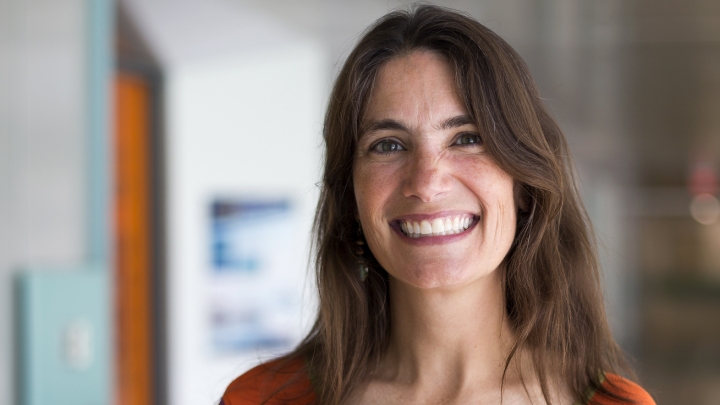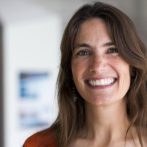
Mechanical engineers are perfectly positioned to lead efforts toward more sustainable energy, but they can’t do it alone. Margaret Wooldridge, Arthur F. Thurnau Professor of Mechanical Engineering, imparts this message to students in many ways, including through the Advanced Energy Solutions (ME 433) course she developed more than 12 years ago and in her leadership of the Dow Sustainability Fellows Program, which she has directed for the past two years.
“On the first day of class every semester, I tell students the foundation of the ME discipline is on moving energy around. When we look at sustainable energy solutions, this is us,” Wooldridge said.
It isn’t exactly a hard sell. “A course on sustainable energy topics could only be successful because students are craving the information. They want to be part of a bigger solution and conversation about how we can move toward more sustainable energy generation and use,” said Wooldridge, who has been working on and teaching the physics of climate change in thermodynamics courses long before it moved into mainstream focus.
When Wooldridge first offered the Advanced Energy Solutions course in Fall 2007, about 25 students enrolled. Now two sections of Advanced Energy Solutions are offered every semester to full classrooms. Six instructors teach over 200 students annually and, although the course is an elective, nearly every graduating ME student has taken it.
Grassroots behavior change
Working in teams, students complete two main projects: a video about a high-impact but low- or no-cost behavior change to reduce energy demand and a more technical written report. Common video projects over the years have included moving from disposable plastic water bottles to reusable containers and carpooling or biking to work. Other student teams have shown the impact of reducing beef consumption, turning off the water when brushing teeth, and replacing incandescent and compact fluorescent bulbs with LEDs.
“Many of the videos are extraordinarily clever in how the teams present the problem and the behavior change, and many also make policy suggestions,” Wooldridge said.
The projects teach an important lesson — that while policy and technology are important, efforts to reduce energy demand also have to come from individuals at the grassroots level. She said, “If you carpool one day a week to work, you’re reducing your carbon emissions by close to 20 percent —assuming you commute five days a week. National standards can’t get close to that in the short term, and not without a lot of technology and cost.”
Mechanical engineering is a natural lens through which to view, and teach, the need for behavior change, she added, and to develop solutions.
Solutions require interdisciplinarity
Those solutions invariably cross traditional disciplinary boundaries. As director of the Dow Sustainability Fellows Program at the University of Michigan, a university-wide, co-curricular program that supports professional, master’s, and doctoral students to become sustainability leaders, Wooldridge’s oversight enables in-the-trenches teamwork across multiple fields. Together, team members create sustainable solutions at the community level and with global reach.
For example, a recent Dow Distinguished Award team, advised by ME Professor Kazu Saitou, focused on developing a solar-powered bicycle trailer to assist low-income entrepreneurs in sub-Saharan Africa. When not being used for transportation, the cart could serve as a power source for lighting and mobile phone charging To ensure interdisciplinarity, project teams must include representatives from at least three U-M schools or colleges. Saitou’s team included students and faculty from the College of Engineering, Michigan Ross and the School for Environment and Sustainability. College alumni, entrepreneurs, and faculty at the Kwame Nkrumah University of Science and Technology (KNUST) in Kumasi, Ghana, also participated.

“There are so many decisions involved in adapting and optimizing sustainable technologies,” said Saitou. “You need math and engineering and a systems view to know how to pose each decision-making problem. You also need to look at the environmental impact, the economic and ethnologic aspects. These change over time, which impacts innovation and transformative technologies. All of these aspects are crucial to projects like these.”
In both her courses and the Dow Sustainability Fellows Program, Wooldridge is most pleased and impressed by both the solutions teams develop and by “how they internalize opportunities and challenges. They come out with a real sense of personal ownership and leadership.” Many take jobs in the energy sector and other sustainability-related areas. In a recent impact assessment, fellows reported the program was their only opportunity to have this type of interdisciplinary experience.
Such experiences are “very influential,” Wooldridge said. About 85% of past fellows reported now working in a sustainability-related career. “And that’s my goal,” she said, “to help them internalize this approach as an engineering professional as well as a global citizen.”
